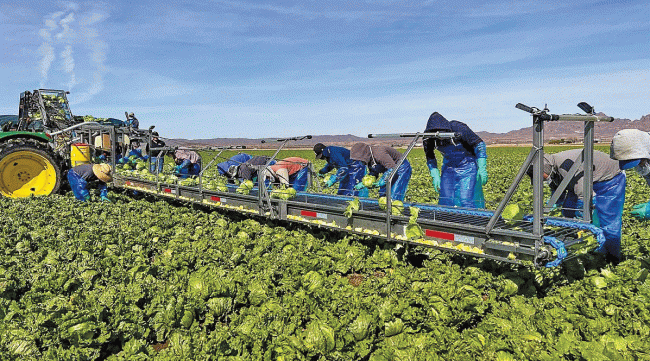Staff Reporter
EPA Final Biofuel Volume Rule Slammed by Ag Interests

[Stay on top of transportation news: Get TTNews in your inbox.]
Hours after the U.S. Environmental Protection Agency issued a final rule June 21 establishing biofuel volumes in its Renewable Fuel Standard (RFS) Program, an outcry was raised by Iowa Gov. Kim Reynolds and others that those standards fail to reflect current and future output.
“At a time when American energy and national security is threatened, it’s disappointing to see the Biden administration continue its assault on homegrown, American energy production,” Reynolds said. “Biofuels can play a key role in fighting off this energy crisis and provide millions of Americans with cheaper, cleaner-burning fuel.”
A few weeks ago, Reynolds joined with Govs. Mike Parson of Missouri and Jim Pillen of Nebraska in a letter May 25 urging the EPA to adjust its previous proposed RFS rules setting biofuel volumes at levels beneath industry capacity. “Domestic production of these fuels topped 3 billion gallons in 2022. However, the volumes your agency proposed would not even reach 3 billion gallons by 2025,” the governors stated.
In announcing the EPA’s final determination, however, Administrator Michael Regan declared, “Today’s final rule reflects our efforts to ensure stability of the program for years to come, protect consumers from high fuel costs, strengthen the rural economy, support domestic production of cleaner fuels and help reduce greenhouse gas emissions.”

Reynolds
He said the EPA is committed to greater use of renewable fuels to diversify energy supplies, reduce emissions and enhance the domestic economy.
The EPA contends its final rule “increases U.S. energy security by reducing U.S. oil imports by roughly 130,000 to 140,000 barrels of oil per day over the time frame of the final rule, 2023-2025. The anticipated value of the energy security benefits to the U.S. economy ranges from $173-$192 million per year over the time frame of the final rule.”
While the EPA noted the final biofuel rule demonstrates support for U.S. agricultural communities, groups representing American agricultural interests blasted the lower figures after many biofuel producers had urged the EPA to raise production levels to reflect the reality of increased growth and demand.
“EPA is undercutting the certainty that our industry hoped for from a three-year RFS rule,” said Kurt Kovarik, vice president of Federal Affairs with Clean Fuels Alliance America.
The Missouri-based organization, which represents the biodiesel, renewable diesel and sustainable aviation fuel industries, noted that the EPA finalized moderate increases in biomass-based diesel and non-cellulosic advanced volumes each year but didn’t increase the overall renewable fuel market. It also failed to change biomass-based diesel volumes for 2023 despite a rapid increase in U.S. production of biodiesel, renewable diesel and sustainable aviation fuel earlier this year.

Guy Broderick of Kriska shares how he successfully combined data reports and a simple understanding of human nature to become one of the best driver coaches in North America. Tune in above or by going to RoadSigns.ttnews.com.
The alliance contended that the EPA’s public data for the RFS listed a 30% increase to 400 million gallons of qualifying biomass-based diesel production from January to May compared to the same time last year. It also cited figures from the U.S. Energy Information Administration’s Short Term Energy Outlook for June that predicted higher U.S. production of biodiesel and renewable diesel of more than 800 million gallons in 2023 and 900 million gallons in 2024.
“In the final rule released today, EPA increases RFS volumes for these fuels by only 590 million gallons over the three-year period: 60 million gallons in 2023, 220 million gallons in 2024 and 310 million gallons in 2025,” the alliance noted.
Kovarik said, “U.S. clean fuel producers, oilseed processors, fuel distributors and marketers have all made significant investments to grow the industry rapidly over the next several years. The industry responded to signals from the Biden administration and Congress aiming to rapidly decarbonize U.S. fuel markets, particularly aviation, marine, and heavy-duty transport, and make clean fuels available to more consumers. The volumes EPA finalized today are not high enough to support those goals.”

Walmsley
Representing farmers and ranchers, the American Farm Bureau Federation (AFBF) expressed disappointment in the EPA’s final rule.
Andrew Walmsley, AFBF’s senior director of government affairs, told Transport Topics, “Biofuels are critically important to American agriculture, jobs, our rural communities and overall emissions reductions for the transportation sector. While there are some improvements to what EPA had initially proposed, today’s announcement falls short of meeting the true potential of homegrown renewable biofuels in securing our energy needs and as part of a smart climate strategy.”
Want more news? Listen to today's daily briefing below or go here for more info:




